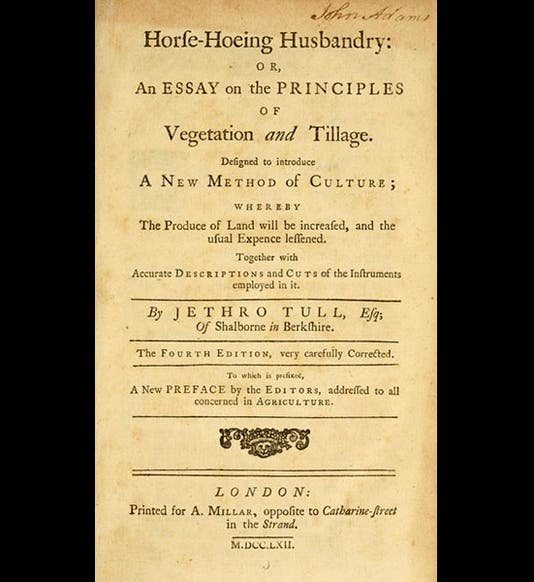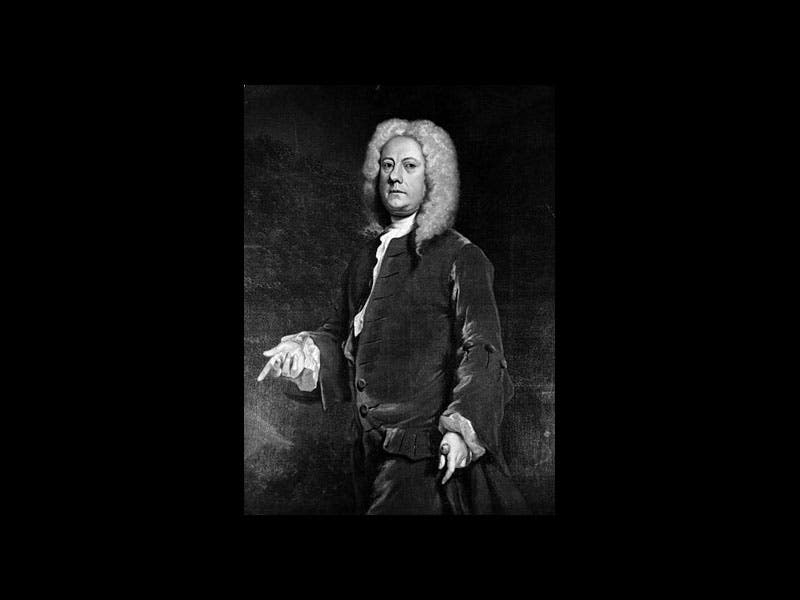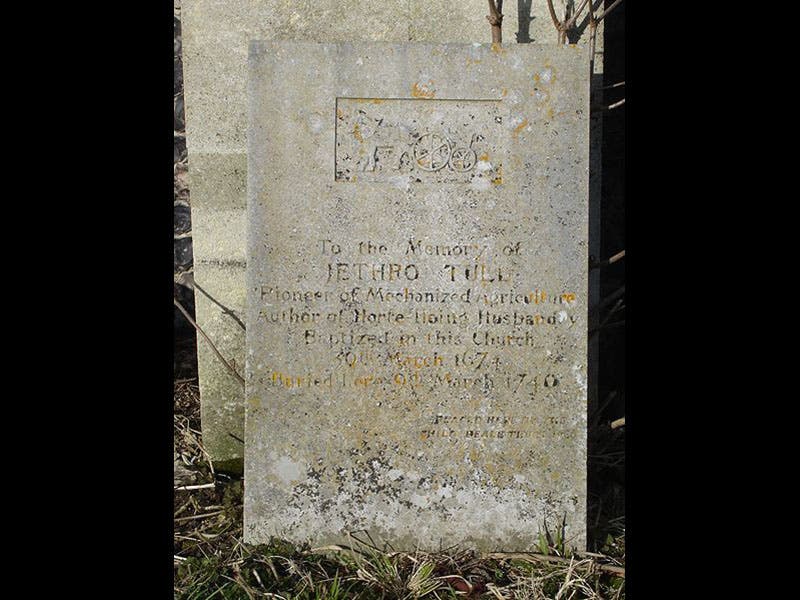Scientist of the Day - Jethro Tull
Jethro Tull, an English agricultural reformer, was baptized Mar. 30, 1674. Tull has traditionally been hailed as a key figure in the launching of the English agricultural revolution; in fact, in older literature, it is often said that the revolution began with the publication of Tull's book, The Horse-hoeing Industry (1731). Tull invented a horse-drawn seed drill (second image above) that allowed crops to be planted in rows, so they could be more easily weeded, and this is said to have been a key element in the mechanization of agriculture. However, it has been recently argued that the agricultural revolution owed little to farm machinery, being more the result of land enclosure, the institution of a four-crop rotation system, and the development of selective animal breeding. Tull lobbied against crop rotation, was opposed to letting fields lie fallow or be planted with clover to recover their fertility, and campaigned against the use of manure as a fertilizer (he said manure carries too many weeds). Tull maintained that a proper plow would pulverize the soil sufficiently for plant nutrition, and that was all that the crops needed. He was, in other words, somewhat of a reactionary, and since very few people adopted the seed-drill for another century, or gave up their crop rotation system, modern consensus is that Jethro Tull probably did not have much impact on the agricultural evolution. But he did have a great name, and so in 1968 he was granted a second life as a rock band, led by a wild flutist, Ian Anderson, who seems to have been just as gifted and just as eccentric as his band's namesake.
We have the 2nd and 3rd editions of Tull's Horse-Hoeing Industry in the History of Science Collection, but they have not been digitized. The images above are from the fourth edition (1762) at the Boston Public Library, which just happened to have been owned (and signed) by John Adams. There is only one portrait image of Tull, and that is generally unattributed, so we just hope it is a valid likeness (third image). We show his gravestone in St. Bartholomew’s Churchyard (fourth image), because it is the only source for his baptismal day of Mar. 30, his date of birth being unknown.
Dr. William B. Ashworth, Jr., Consultant for the History of Science, Linda Hall Library and Associate Professor, Department of History, University of Missouri-Kansas City. Comments or corrections are welcome; please direct to ashworthw@umkc.edu.








![“Aurora Borealis,” hand-colored wood engraving by Josiah Wood Whymper, [Natural Phenomena], plate 2, 1846 (Linda Hall Library)](https://assets-us-01.kc-usercontent.com:443/9dd25524-761a-000d-d79f-86a5086d4774/0245ffcb-b70c-477c-8792-0a73ebd54eb2/Whymper%2011.jpg?w=210&h=210&auto=format&fit=crop)

